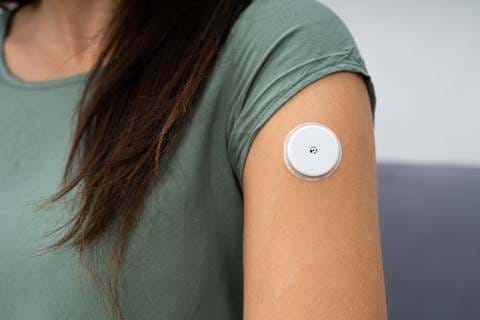
Updated DVLA guidelines for continuous glucose monitoring devices
Relaxed rules allow drivers with diabetes using insulin more flexibility around taking glucose readings before and during journeys.
The Driver and Vehicle Licensing Agency (DVLA) have updated their guidelines for people with diabetes taking insulin to treat the condition.
The recently published updated DVLA guidelines allow drivers with diabetes who are using flash and continuous glucose monitoring devices to take glucose readings before they drive, or during breaks in driving.
Previously, drivers were required to check their glucose levels with a finger prick blood reading no more than two hours before driving, followed by repeat tests during breaks for every two hours of driving.
Julie Lennard, Chief Executive of the DVLA, said: “We want to make it as safe and as easy as possible for drivers to get on the road. Our panel of medical experts who help set the medical standards for driving are always looking at how we can use advancing technologies, and we’re pleased to be able to offer drivers another way of how they monitor their glucose levels.”
The guidelines have been updated following discussions with the Secretary of State for Transport’s Honorary Medical Advisory Panel on driving and diabetes mellitus. The panel consists of leading medical experts in diabetes, DVLA doctors, lay members and observers from other organisations. It works together with the DVLA to provide expert advice with the aim of maintaining and improving road safety.
Lee Calladine, Event Coordinator at DRWF, living with type 1 diabetes, said: “Being aware of the DVLA rules is incredibly important, as well observing legal requirements it ensures I do not put myself or others at risk. As a driver with type 1 diabetes and user of flash glucose monitoring, the updated rules on using flash and continuous glucose monitoring technology are a welcome development.
“The new rules give me more flexibility around testing as well as the added benefit of seeing which way my blood-glucose levels are heading before I get in my car. This allows me to plan my journey better, take appropriate action to make sure my levels are stable and safe, and also gives me a timeframe of when I need to take a break and test again. Having a driving licence is a privilege, so the combination of these new rules and the diagnostic technology increases my confidence in managing my diabetes and maintains my personal responsibility as a road user.”

The new driving guidelines for people with diabetes:
- The guidelines on glucose testing published today apply to car and motorcycle drivers who treat their diabetes with insulin. The requirements for glucose testing for bus and lorry drivers remain the same (finger prick blood reading).
- Drivers can still use finger prick blood test readings to test their blood glucose levels, should they choose to. The updated guidelines include information for drivers who still prefer to test in this way. The guidelines also include guidance for drivers who treat their diabetes by tablets, diet or both.
- Drivers can wear a glucose monitor (which is in effect a small sensor) on their skin. These sensors record the driver’s glucose levels continuously. Flash Glucose Monitors are used by physically scanning the sensor with a handheld device as required to obtain the readings. Continuous glucose monitoring devices transmit a continuous reading to a handheld device, phone or watch directly from the sensor.
- If using flash or continuous glucose monitoring, drivers must still confirm their blood glucose level with a finger prick test if: their glucose level is 4.0 mmol/L or below; they experience symptoms of hypoglycaemia; the glucose monitoring system gives a reading that is not consistent with the symptoms they are experiencing (for example, they feel the symptoms of hypoglycaemia but the reading does not indicate this).
- Drivers who treat their diabetes with insulin must tell DVLA. Drivers who treat their diabetes by diet only do not need to tell DVLA. If in any doubt, drivers should speak to their GP or a medical professional involved in their treatment.
Find out more about driving with diabetes regulations on the DVLA website
Support DRWF by making a donation here
Find out more about DRWF-funded research here
Find out more about DRWF fundraising here
For latest update follow DRWF on Facebook, Instagram and Twitter
To receive the charity’s latest bulletins as they become available, please sign up here
Read DRWF diabetes information leaflets here
Join the Diabetes Wellness Network here
I would like to make a regular donation of
I would like to make a single donation of
There are lots of ways to raise money to support
people living with all forms of diabetes.
Bake, Swim, Cycle, Fly ... Do It For DRWF!
Fundraise with us
Recent News


